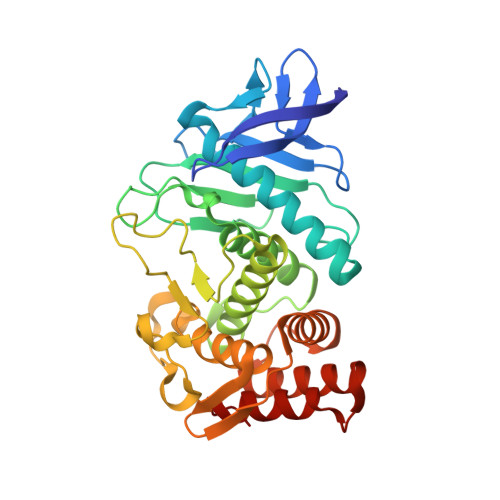Rational Design of Thermodynamic and Kinetic Binding Profiles by Optimizing Surface Water Networks Coating Protein-Bound Ligands.
Krimmer, S.G., Cramer, J., Betz, M., Fridh, V., Karlsson, R., Heine, A., Klebe, G.(2016) J Med Chem 59: 10530-10548
- PubMed: 27933956
- DOI: https://doi.org/10.1021/acs.jmedchem.6b00998
- Primary Citation of Related Structures:
5JS3, 5JSS, 5JT9, 5JVI, 5JXN, 5L3U, 5L41, 5L8P - PubMed Abstract:
A previously studied congeneric series of thermolysin inhibitors addressing the solvent-accessible S 2 ' pocket with different hydrophobic substituents showed modulations of the surface water layers coating the protein-bound inhibitors. Increasing stabilization of water molecules resulted in an enthalpically more favorable binding signature, overall enhancing affinity. Based on this observation, we optimized the series by designing tailored P 2 ' substituents to improve and further stabilize the surface water network. MD simulations were applied to predict the putative water pattern around the bound ligands. Subsequently, the inhibitors were synthesized and characterized by high-resolution crystallography, microcalorimetry, and surface plasmon resonance. One of the designed inhibitors established the most pronounced water network of all inhibitors tested so far, composed of several fused water polygons, and showed 50-fold affinity enhancement with respect to the original methylated parent ligand. Notably, the inhibitor forming the most perfect water network also showed significantly prolonged residence time compared to the other tested inhibitors.
- Institute of Pharmaceutical Chemistry, University of Marburg , Marbacher Weg 6, 35032 Marburg, Germany.
Organizational Affiliation:





















